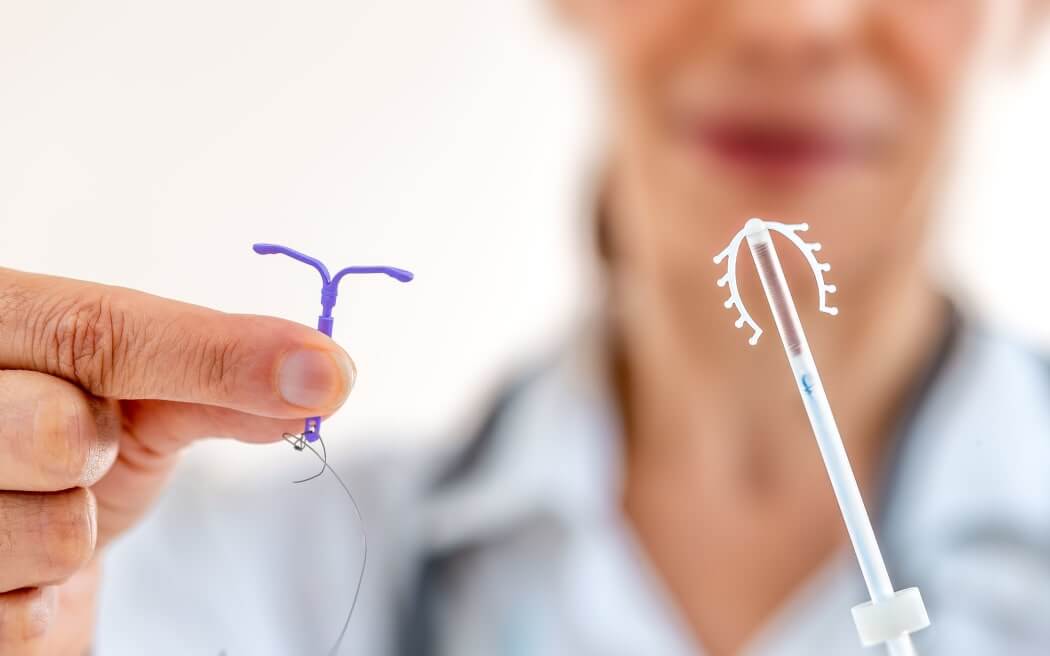Intrauterine Device (IUD)
What is an IUD?
 File photo. A doctor holds two kinds of intra-uterine devices for birth control. Credit: RNZOpens in new window
File photo. A doctor holds two kinds of intra-uterine devices for birth control. Credit: RNZOpens in new window |
The IUD is a small T-shaped device that the practitioner inserts into the uterine cavity.
Currently, two types IUDs are approved for use in the United States, each containing a chemically active substance (either copper or progestin).
The copper-bearing device is effective for up to 10 years, and the progestin-releasing device for five years.
As a safety measure, IUDs are radiopaque (can be seen on x-ray). Each month, the woman must check for presence of the string in the vagina to confirm continued placement of the device.
- The copper-bearing IUD acts by damaging sperm in transit through the uterus. Few viable sperm are able to reach the ovum, thus preventing fertilization.
- The progestin-bearing device affects cervical mucus and endometrial development. The effect is local and typically causes no disruption of ovulation.
The absence of estrogen makes the copper IUD a more appropriate contraceptive for women older than 35 years, heavy smokers, and for women with hypertension, vascular disease, or familial diabetes.
The IUD offers continuous protection from uwanted pregnancy without the need to remember a daily pill or engage in other manipulations between coital acts. Placement of the IUD can occur at any time during the menstrual cycle after obtaining a negative pregnancy test. It is effective for use immediately after childbirth or after an abortion.
When the woman wants to become pregnant, the practioner removes the device, and fertility returns. The progestin-bearing device offers the added benefits of decreasing dysmenorrheaOpens in new window and is useful for decreasing bleeding in women with menorrhagiaOpens in new window (abnormally long or heavy menstrual cycle periods). Both types of IUDs provide reduction in the risk of endometrial cancer (Dean & Goldberg, 2013).
Side effects include cramping and bleeding upon insertion of the device. Common reasons for removal of the copper device include dysmenorrheaOpens in new window and increased menstrual flow.
Headache, breast tenderness, and acne are common side effects of the progestin-releasing device. Risks include uterine perforation and accidental device expulsion. The IUD offers no protection against STIs. Exhibit 1 outlines signs of complications with IUD use.
| Exhibit 1. Signs of Complications with IUDs |
|---|
The mnemonic “PAINS” can help you remember the signs of potential complications related to IUDs.
|
See also:
- Family Planning (Planning & Preventing Pregnancy)Opens in new window
- Natural Contraceptive Methods for Preventing PregnancyOpens in new window
- Fertility Awareness Methods (FAMs)Opens in new window
- Barrier Methods of ContraceptionOpens in new window
- Hormonal Methods of ContraceptionOpens in new window
- SterilizationOpens in new window
- Emergency ContraceptionOpens in new window

